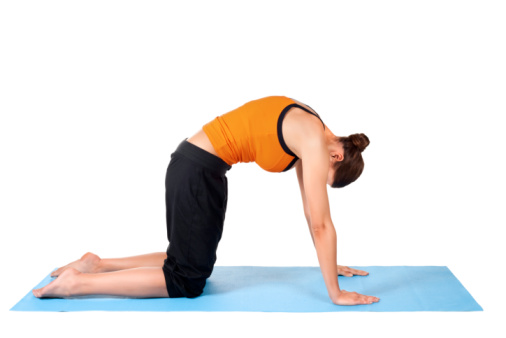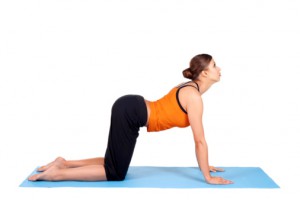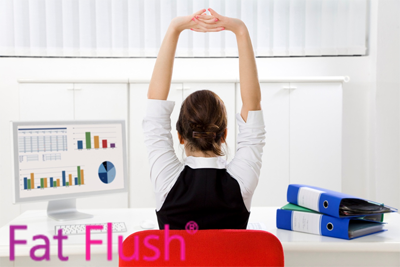
by ffadmin | Apr 4, 2016 | Health & Wellness, Stretching
The rules and warnings about stretching are all over the map. Here’s what you need to know…
One of the most crucial parts of your workout is the cool-down stretch. Stretching keeps your connective tissues elastic. It also helps your body flush out the lactic acid that accumulates in your muscles after exercise—the same lactic acid that contributes to aches and pain. Finally, stretching improves the range of motion in your joints and muscles and helps relieve stress and prevent injury.
Stretching is especially important as you get older. Our joints tend to lose some of their flexibility, but this tendency can be combated by regular stretching. The younger you are when you start stretching, the move flexible you’ll be as you get older. Static stretches are a classic way to enhance flexibility. These stretches are a slow, gradual, and controlled elongation that brings muscles through the full range of motion. Hold them for fifteen to thirty seconds in the furthest comfortable position, without pain.
Proper Stretching Tips
- Stretch your muscles when they are warm, not cold. After cardio activity is a good idea because your large muscles are warm and flexible.
- Focus on the muscle you’re stretching.
- Breathe deeply while you stretch. If you inhale as you begin your stretch, you’ll find that your muscles extend comfortably even further. For stretches that require you to bend forward, exhale as you bend forward and inhale slowly as you hold the stretch.
- Move into the stretch until you feel a slight tension, but no pain. The stretch should feel good, even if your muscle feels slightly achy.
- Hold the stretch for ten to thirty seconds. If you are a beginner or have rarely stretched before, start with ten seconds and gradually increase to thirty seconds.
- Release the stretch slowly. Never bounce or jerk out of the stretch- that can trigger the stretch reflex, which causes the muscle to tighten, rather than relax, to protect itself from injury.
Adapted from ‘ The Fat Flush Fitness Plan ‘

by ffadmin | Mar 25, 2016 | Health & Wellness, Stretching
Begin on your hands and knees. Round your back by contracting your abdominal muscles and tucking your pelvis. 
Then allow your back to sag toward the floor as you lift your chest forward. Hold briefly. Repeat three to five times.
This is a stability exercise that trains your entire core, including your abdominal, lower-back, and hip muscles.

by ffadmin | Feb 15, 2016 | Health & Wellness, Stretching
Stretching—in general—boosts energy, releases tension and improves circulation. Stretching during the workday is not only an ideal way to relieve muscle tension, but can also relax your mind.
Try these quick and easy stretches to rejuvenate yourself, and get back in the game!
Back extension and shoulder blade pinch:
Stand with your feet shoulder-width apart and gently lean backward to the point of mild tension with your arms also reaching back and squeezed towards each other. Tighten shoulder blades, lower back muscles and hold. Repeat three times.
Bridge stretch:
Interlace your fingers with your palms pointing towards the sky. Straighten your elbows and reach as far up as possible with both hands and hold for 20 seconds.
Forearm and wrist stretches:
Extend one arm without bending the elbow. Bend your wrist upward, and use your other hand to gently pull your fingers back toward you and hold for 15-20 seconds. Release and bend the same wrist downward, gently pulling it down and toward you with the other hand. Hold for 15-20 seconds and repeat both stretches with your other arm.
Leg extensions:
Grab the seat of your chair to brace yourself and extend your legs straight out in front of you parallel to the floor. Flex and point your toes five times then release. Repeat three times.
Hamstring stretch:
Stand with your feet crossed and slowly bend forward at the hips and waist to the point of mild tension. Feel the stretch along the back of your rear leg. Hold for 15 seconds and repeat for the other leg.

by ffadmin | Sep 13, 2015 | Health & Wellness, Stretching
Here are a few stretches that can lengthen and strengthen your lower back muscles, which will ease tension and aches.
Hip Stretcher: This will stretch your hip flexor muscles, which run from your lower back to the front of the thigh bone. Sit on the edge of a bed or table, and lie back. Grasp your knees, flattening your entire lower back against the surface. Grab your left knee with both hands and extend the right leg so it hangs freely off the side. Hold for 10 seconds then switch legs.
Side Stretcher: This will stretch lower back muscles that run from the top of your hip bone to the bottom rib. Lie on the floor on your right side, supporting yourself up on your forearm. Bend your left leg and move it up toward your stomach as far as you can. Plant your left foot on the floor. Slowly raise your upper body so that your right arm is straight, stopping when you feel a stretch along the right side of your waist. Switch and do the other side, repeating 2 times.
Glute Stretcher: Stretches your muscle under the glutes and hip joint. Stand facing a table, counter, or any other surface that’s about the same height as your hips. Raise your right knee and lift your ankle so that the outside of your leg is resting on the table. Your leg should be in an L shape and be in line with your hip. Lean your upper body forward, arching your lower back, until you feel a slight stretch in your glutes. Switch to the other leg and do two sets each.

by ffadmin | May 10, 2013 | Health & Wellness, Stretching
Stretching is important to keep the body limber, relaxes the body and mind, keeps circulation going, and also helps release toxins. But with all the benefits, is there a “right” time and “right” way to stretch? Here are some popular myths and the truth behind them…
1. Myth: Stretching one particular muscle (or group of muscles) will only relieve that area, hence the reason for LOTS of different stretch moves.
Every muscle in your body is connected— have you ever heard to relieve a headache, put pressure on the fleshy part of your hand at the base of your thumb? It works! But back to stretches…stretching one area will be beneficial to multiple different areas because things in our bodies are so interconnected. Don’t have a lot of time for stretching? Pick a few different moves and rotate through them regularly.
2. Myth: Stretching a few times a week is more than enough.
Consistent stretching is important to maintain the benefits. Think of your body like a rubberband— stretch it out every now and then, it will tighten right back up. Stretch it regularly and, over time, it will sustain the loose flexibility.
3. Myth: Stretching after a workout isn’t important, as long as you stretched beforehand.
Actually, the post-workout stretch is just as important as your pre-workout stretching. It’s a soothing way to cool-down your muscles thoroughly.
4. Myth: Stretching isn’t important if you’re already flexible.
False. Stretching and warming up muscles are important for anyone with blood flow. (So…everyone.) Like we talked about earlier, stretching increases blood flow and helps the body release toxins. If basic stretches are too easy, push on to some more advanced moves.
5. Stretching (or not) has no effect on performance.
Flexible muscles improve your body’s range of motion, which means you can DO more stuff. Have you ever simply reached for something and felt a painful strain in a muscle? You were reaching beyond your ‘range of motion’.
The key is to start slowly, easing into the movement or position. Although you should feel some strain when you stretch, your muscles should still be comfortable and not in any sharp pain. Try not to bounce in the position or move too quickly— this gives your muscles no time to ‘stretch’, but instead forces them into the ‘finished position’, which defeats the purpose.





